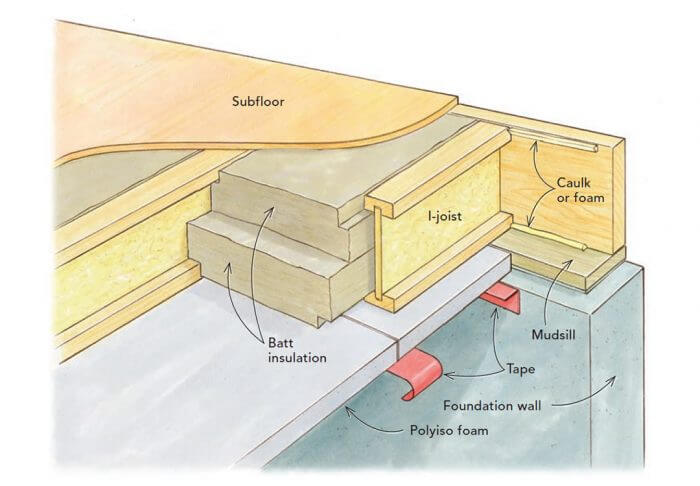Why Does My House Need Ventilation? (Home Ventilation Basics)
Date Published: April 1, 2020
Houses are complex structures with many installed systems working simultaneously to produce a safe and comfortable living space. Proper home ventilation is the key to good indoor air quality.
While it may be easy to focus on the things that you see, like natural light through windows and paint colors, the comfort of a house is found in its mechanical systems. Old drafty houses and new airtight houses each pose their own set of challenges to overcome in order to produce a truly healthy and comfortable home.
Older Homes Were Made To “Breathe”
Old houses don’t get enough credit. While houses built before the 1980s did not have a focus on energy efficiency features, they were generally well built and have some natural features that new construction homeowners would be jealous to have.
In an era of construction before we had “house wrap,” a framed structure could breathe naturally through its own walls. As temperatures fluctuate from one season to the next, an old framed house will expand and contract, allowing air to pass through the closed wall assemblies.
Older home’s natural ventilation results in better indoor air quality but comes at a cost. As indoor air naturally exchanges with outside air, the house will be “bleeding” energy to the outside. This is a large part of the cost of heating and cooling older homes and why air sealing efforts can go a long way.
New houses have an entirely different set of problems that can result from improper ventilation. Houses that have been systematically air sealed and wrapped up can become host to a slew of indoor air quality issues ranging from high humidity, condensation issues, and even mold growth if things are left to develop long enough.
While energy codes have come a long way and continue to improve, one area that did not receive its due for many years was mechanical ventilation systems. In the early 2000s, when new construction houses had gotten really airtight, a simple vent that connected from a house’s ductwork to the outside would be installed. The idea being that the furnace would “suck” unconditioned outside air into the ductwork and that would be good enough.
Over time, more and more complicated variations on that idea were introduced to new construction practices. You may have been inside of your friend’s house and noticed that the laundry room bath fan could not be turned off. That would be by design!
A simple mechanical ventilation solution using components that were already installed, but a lack of understanding on the home owner’s part can result in dedicated fans being shut off for being “too loud.”
The HRV (Heat Recovery Ventilator) or ERV Energy Recovery Ventilator)
New construction houses are designed and built so airtight today that a more complicated solution became necessary. It’s bad for you and your house to live inside of an air-sealed plastic baggie. Because of this, artificial home ventilation needs to be added.
Indoor air exchanging with outdoor air has become so limited due to new construction practices that a dedicated system for this purpose is installed in many new homes. You may walk into a utility room and see an HRV as commonly as you would find a furnace and a water heater.
These systems work exclusively for indoor air quality by pulling outdoor air into the compartment, cycling that air through the home via the duct system, and then exhausting indoor air back to the outside of the house.
Operating on a timer and a sensor, these systems ensure that fresh air is being supplied throughout the house and that old air is being exhausted away.
Continuously running exhaust fans are a cheaper and simpler solution that many builders are allowed to utilize as well. These units look just like a bathroom fan but have a high CFM (cubic feet of air per minute) rating. These fans will run constantly or on a timer to create negative pressure in a home and force fresh air in.
So How Does Your Home Ventilation Stack Up
And what can you do about its shortcomings?
If you live an older house that feels drafty and your energy bills are too high, you may want to get familiar with some building science basics and identify actions that you can do to limit energy loss.
Older homes are typically fertile ground for energy efficiency and indoor air quality improvement efforts.
If you live in a newer house, but experience problems with humidity, condensation, or indoor air quality you may have to explore other options with a qualified professional. However, other issues can be corrected relatively simply.
Related Articles
If you enjoyed this article, you may be interested in some of our others.












